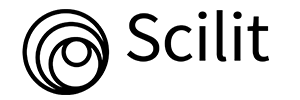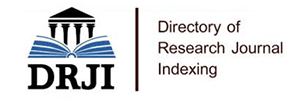
Journal Basic Info
- Impact Factor: 1.995**
- H-Index: 8
- ISSN: 2474-1647
- DOI: 10.25107/2474-1647
Major Scope
- General Surgery
- Pediatric Surgery
- Ophthalmic Surgery
- Otolaryngology - Head and Neck Surgery
- Oral and Maxillofacial Surgery
- Transplant Surgery
- Endocrine Surgery
- Robotic Surgery
Abstract
Citation: Clin Surg. 2019;4(1):2416.Research Article | Open Access
Quality of Life after Kyphoplasty - Clinical and Radiological Results of Vertebral Fractures due to Osteoporosis or Cancer
Tassemeier T, Jager M, Schutzbach M, Serong S, Brandenburger D and Haversath M
Department of Orthopedics and Trauma Surgery, University of Duisburg-Essen, Germany
*Correspondance to: Tassemeier T
PDF Full Text DOI: 10.25107/2474-1647.2416
Abstract
Purpose: Spinal tumors and osteoporotic fractures are a common and morbid condition. Kyphoplasty (BKP) was developed with the goal of restoring vertebral height, correction of the kyphotic angle and improving quality of life. The purpose of this retrospective study was to compare the clinical and radiological outcome of patients after Balloon Kyphoplasty (BKP) of Osteoporotic Fractures (OF) or due to cancer (VT).
Materials and Methods: Two groups of cancer and Osteoporotic Fracture patients (OF) undergoing kyphoplasty with a minimum follow up of 12 months analyzed. Clinical outcome was evaluated by Oswestry Disability Index (ODI), whereas intraoperative and radiological data such as cement volume and leakage, vertebral body restoration and realignment of the kyphosis angle served as objective parameters. Moreover, complications were documented. Statistical analysis (Spearmen Correlation, Mann-Whitney-U-Test) was performed (Spearmen Correlation, Mann-Whitney-UTest).
Results: This study included 121 patients (84 × OF; 37 × VT) undergoing vertebral body augmentation. Mean operative time was 38 min, cement volume was on average 2.6 ml. Kyphosis correction was on average 6.0° in both groups and the vertebral height was restored by 3.8 mm. Statistical analysis showed no differences of the groups in terms of operative time, cement volume, rate of cement leakage, kyphosis reduction or restoration of vertebral height. There was a significant difference in the postoperative ODI between the groups with a higher grade of disability in the OF group.
Conclusion: These results demonstrate the efficacy and safety of BKP in the treatment of vertebral fractures due to osteoporosis or cancer. Postoperatively, patients with a cancer related fracture show higher quality of life measures in the ODI. We found no correlation of the restored vertebral height, the applicated cement volume and the kyphosis correction to clinical outcome measures.
Keywords
Kyphoplasty; Tumor; Osteoporosis; Metastasis; Kyphosis angle; ODI
Cite the article
Tassemeier T, Jager M, Schutzbach M, Serong S, Brandenburger D, Haversath M. Quality of Life after Kyphoplasty - Clinical and Radiological Results of Vertebral Fractures due to Osteoporosis or Cancer. Clin Surg.2019; 4: 2416.













